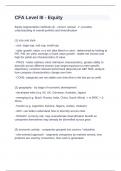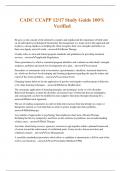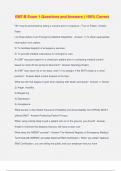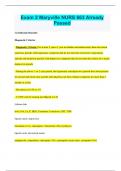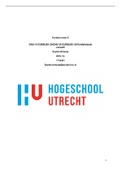Examen
CFA Level III Question and answers 100% correct
- Cours
- Établissement
CFA Level III Question and answers 100% correct Equity segmentation methods (3) - correct answer - provides understanding of overall portfolio and diversification (1) size and style - size: large-cap, mid-cap, small-cap - style: growth, value, or a mix (aka blend or core) - determined by...
[Montrer plus]
